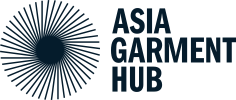India

Republic of India │भारत गणराज्य
Garment and textiles production is one of the oldest industries in India, dating back several centuries. While the industry today remains a mainstay of the national economy, its international presence is also notable, as India has become the 6th largest exporter of garments and textiles in the world.
India has a large raw material base and manufacturing strength across the value chain, incorporating both the hand-woven sector as well as the capital-intensive mill sector (the second largest in the world). Garment and textiles manufacturing accounts for 7% of India's total industrial output (by value), 2% of its GDP, and 12% of the country’s export earnings.
The sector provides direct employment for over 45 million1 people in India, whilst supporting over a hundred million more via indirect means, including many women and the rural population. The Government’s central focus in recent years has been on increasing textile production by building best-in-class manufacturing infrastructure, upgrading technology, fostering innovation, and enhancing labour skills. The Indian garment and textiles market, currently valued at US$35 billion is expected to see further significant growth in the coming decade.
1Figures differ by source. According to the ILO (ILOSTAT), a total of 14,624,000 people are employed in the textile and clothing industry in India.
ILOSTAT employment figures are computations of data taken from India’s national Labour Force Survey. LFS employment data is mostly based on two measures: usual status (i.e., whether people were mostly at work during the last 365 days) and the current weekly status (i.e., whether they were working or not in each week). LFS data -as computed/reported by ILOSTAT- may report lower values for employment and unemployment than other national data sources (with broader statistical definitions of employment and unemployment).
Population
Total
1,428,627,663 (2023)
Gross Domestic Product
GDP per Capita (constant USD, thousand)
$2,089.7 (2022)
Human Development Index Ranking
HDI Rank (out of 191 countries)
134 (2022)
Garment/Textile Workers
Number of workers in the garment/textile sector
45,000,000 (2024)
Women Workers in the Garment/Textile Industry
Percentage of women workers employed in the garment/textile industry
39.7% (2023)
Garment/Textile Industry Exports
(USD$ billion)
US$ 36.7 billion (2023)
Garment/Textile Industry Size
Percentage of total exports
12% (2022)
Key Garment/Textile Export Markets
Top five countries ($USD value exported and subsequent percentage)
| Country | Percentage of Exports |
|---|---|
| United States | 29% |
| Bangladesh | 7% |
| United Arab Emirates | 6% |
| United Kingdom | 6% |
| Germany | 4% |
Government Entities
Government agencies actively involved in the garment/textile industry
Worker Organizations
Trade unions, Union federations, and other worker organizations
- Workers' Organizations
- Bhartiya Mazdoor Sangh (BMS)
- Indian National Trade Union Congress (INTUC)
- All India Trade Union Congress (AITUC)
- Hind Mazdoor Sabha (HMS)
- Centre of India Trade Unions (CITU)
- All India United Trade Union Centre (AIUTUC) – formerly UTUC (LS)
- Self Employed Women’s Association (SEWA)
- All India Central Council of Trade Unions (AICCTU)
- Labour Progressive Federation (LPF)
- United Trade Union Congress (UTUC)
- National Front of Indian Trade Unions – Dhanbad (NFITU-DHN)
Employer/Industry Associations and Chambers of Commerce
Employers and industry related associations, private sectors associations and chambers of commerce
Development Agencies/ International Organizations
National and international development organizations working within the garment/textile industry
- amfori
- International Labour Organization (ILO)
- Deutsche Gesellschaft für Internationale Zusammenarbeit (GIZ) GmbH
- Decent Work in Garment Supply Chains Asia (ILO)
- International Finance Corporation (IFC)
- UNICEF
- UNWomen
- United Nations Population Fund (UNFPA)
Civil Society Organizations/ Non-governmental Organizations
Organizations working within the garment/textile industry
- Oxfam International
- Plan International
Sources of data provided
- Population: https://population.un.org/dataportal/data/indicators/49/locations/356/start/2023/end/2023/table
- GDP Per Capita: https://data.worldbank.org/indicator/NY.GDP.PCAP.KD
- HDI: https://hdr.undp.org/data-center/specific-country-data#/countries/IND
- Garment / Textile Workers: https://www.investindia.gov.in/sector/textiles-apparel
- Notes: Govt press releases also estimate direct employment in Textile sector at 45 million as of 2022 (PIB (Mar. 2022); PIB (Dec. 2022)).
- Garment / Textile Women Workers: https://www.ilo.org/infostories/en-GB/Stories/discrimination/garment-gender#the-global-garment-industry-a-bird%E2%80%99s-eye-view-(1
- Garment / Textile Industry Exports: https://www.ibef.org/industry/textiles/infographic
- Garment / Textile Industry Size: https://www.ibef.org/industry/textiles/infographic
- Key Garment / Textile Export Market: https://www.ibef.org/exports/apparel-industry-india
